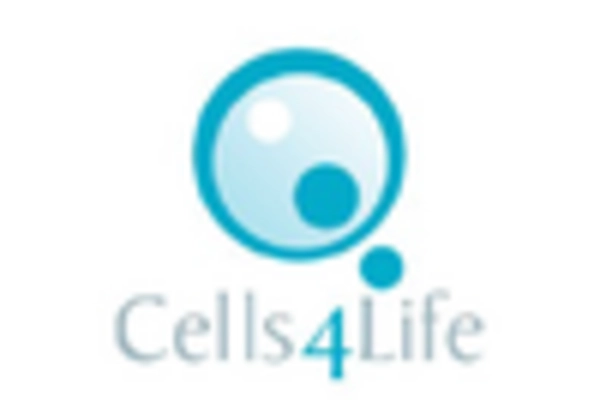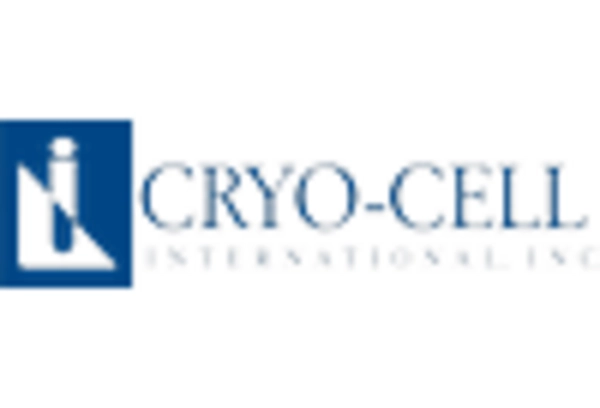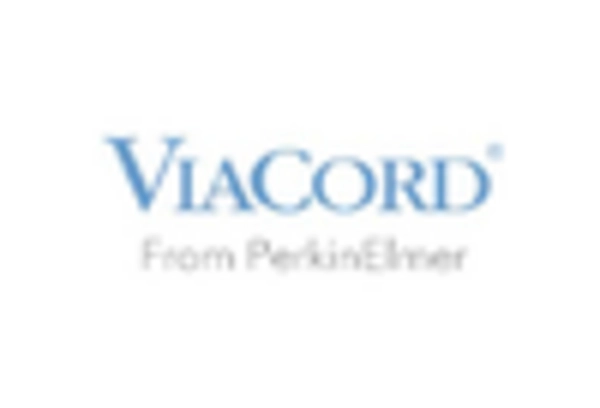Advancements in Storage Technologies
Technological advancements in storage solutions are transforming the stem cell-banking market. Innovations in cryopreservation techniques and biobanking technologies are enhancing the viability and longevity of stored stem cells. In the UK, the introduction of automated storage systems is improving efficiency and reducing the risk of contamination. These advancements are crucial, as they ensure that stem cells remain viable for extended periods, thereby increasing their potential for future therapeutic applications. As storage technologies continue to evolve, the stem cell-banking market is likely to see a surge in demand, as both private and public entities seek reliable solutions for stem cell preservation.
Growing Awareness of Stem Cell Benefits
Public awareness regarding the benefits of stem cells is steadily increasing, which is positively impacting the stem cell-banking market. Educational campaigns and outreach programs are effectively informing the public about the potential uses of stem cells in treating chronic illnesses and injuries. In the UK, surveys indicate that approximately 60% of the population is now aware of the therapeutic applications of stem cells, a significant rise from previous years. This heightened awareness is likely to lead to increased participation in stem cell banking, as families recognize the value of preserving stem cells for future medical needs. Consequently, the stem cell-banking market is expected to expand as more individuals choose to bank their stem cells.
Rising Demand for Personalized Medicine
The stem cell-banking market is experiencing a notable increase in demand for personalized medicine, which is reshaping healthcare paradigms. As patients seek tailored treatments, the need for stem cells, which can be derived from umbilical cord blood and other sources, is becoming more pronounced. In the UK, the market for personalized medicine is projected to grow at a CAGR of approximately 10% over the next five years. This growth is driven by advancements in genomics and biotechnology, which enable more precise therapies. Consequently, the stem cell-banking market is positioned to benefit from this trend, as individuals increasingly opt to bank their stem cells for future medical use, thereby enhancing the overall market landscape.
Regulatory Support for Stem Cell Research
Regulatory frameworks in the UK are increasingly supportive of stem cell research, which is a key driver for the stem cell-banking market. The UK government has established guidelines that facilitate ethical research and clinical applications of stem cells. This regulatory environment encourages investment and innovation within the sector. In 2025, it is anticipated that new regulations will further streamline the approval processes for stem cell therapies, potentially leading to a rise in clinical trials and applications. As a result, the stem cell-banking market is expected to benefit from this supportive regulatory landscape, as more researchers and companies engage in stem cell-related projects.
Increased Investment in Regenerative Medicine
Investment in regenerative medicine is a significant driver for the stem cell-banking market. The UK government and private sectors are allocating substantial funds towards research and development in this field. In 2025, the UK is expected to invest over £500 million in regenerative medicine initiatives, which include stem cell therapies. This influx of capital is likely to foster innovation and expand the capabilities of stem cell banks, allowing for more advanced storage and processing techniques. As a result, the stem cell-banking market is poised to grow, as more healthcare providers and patients recognize the potential of stem cells in treating various conditions, including degenerative diseases.

















Leave a Comment